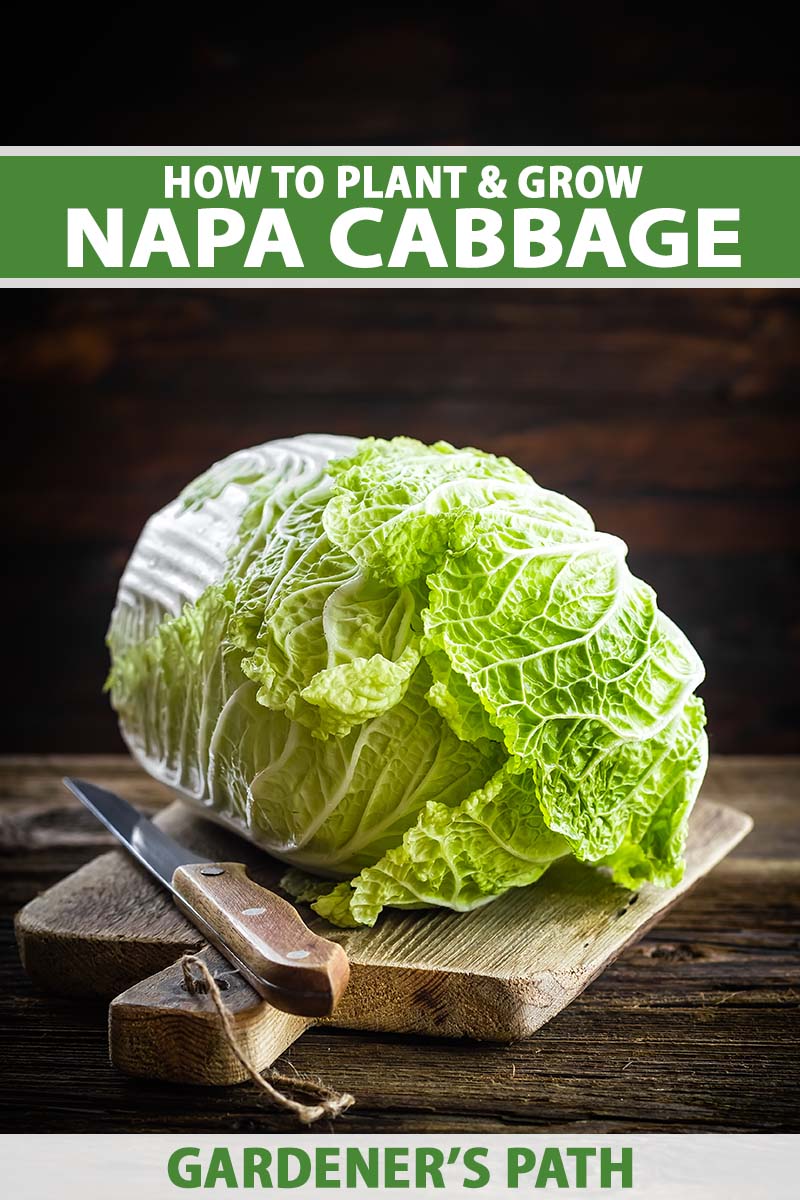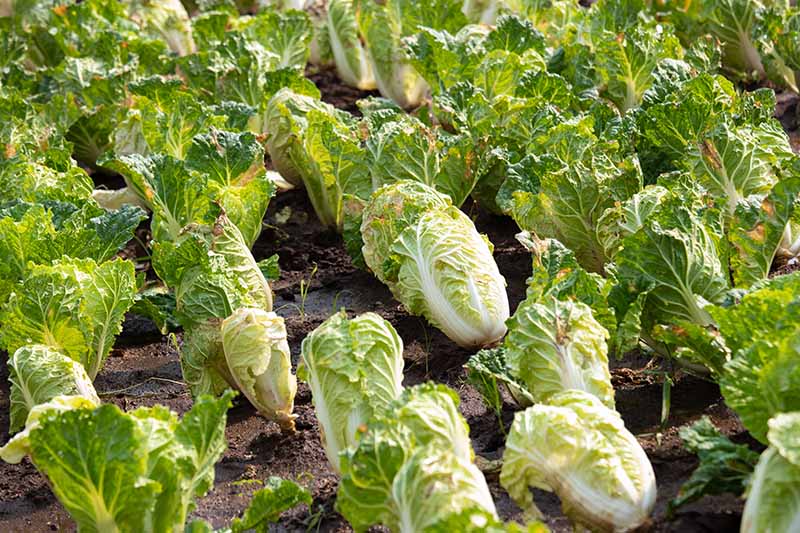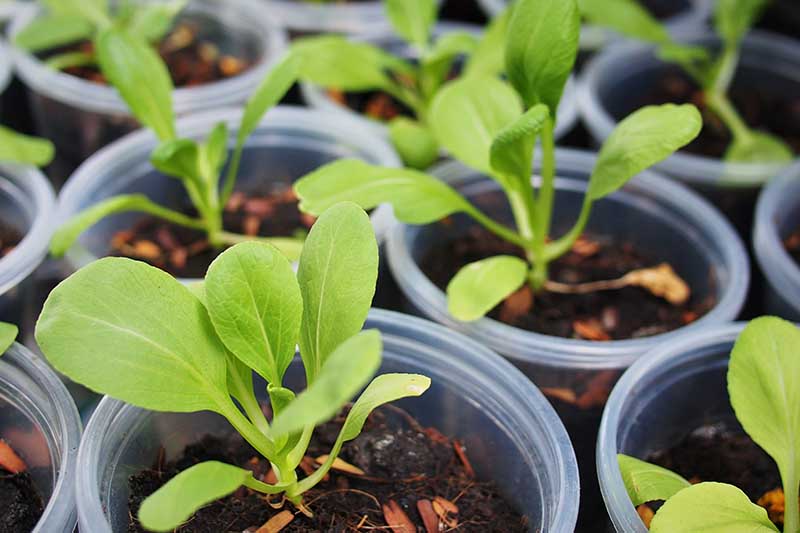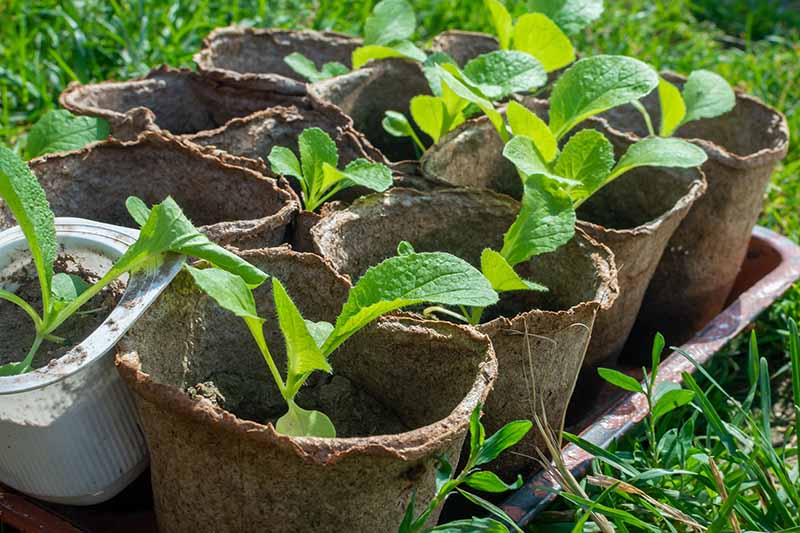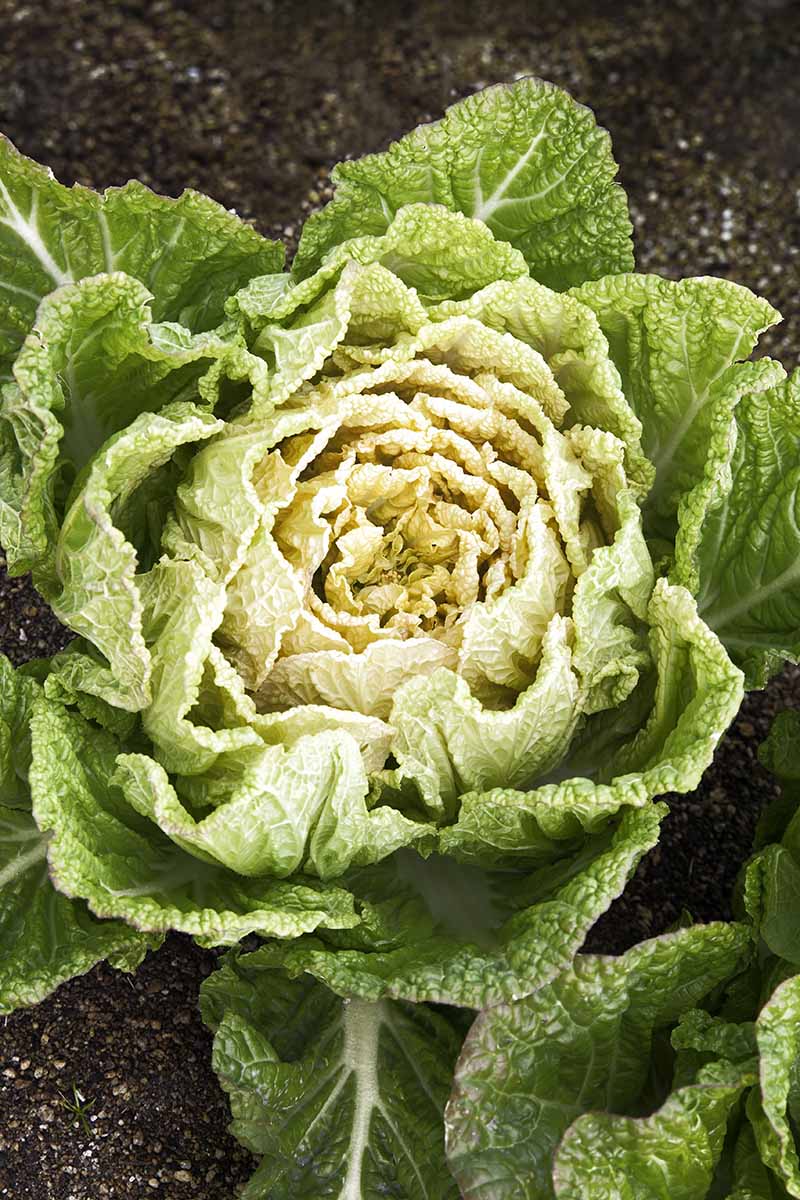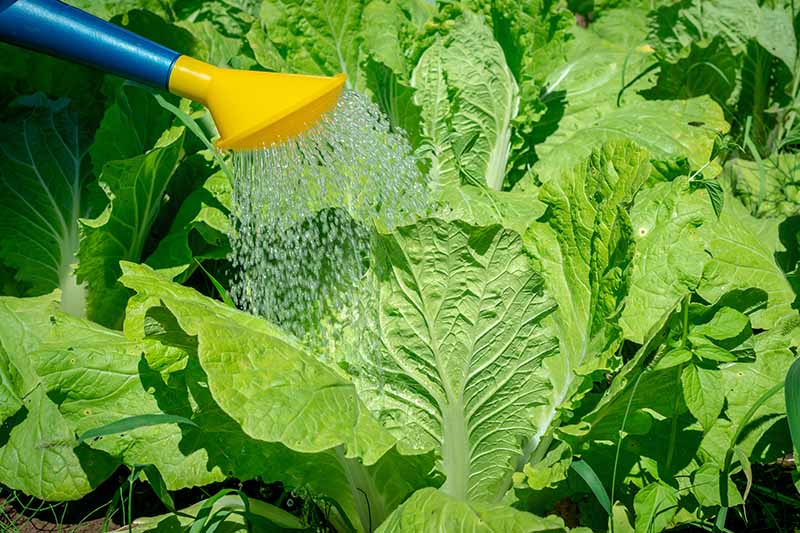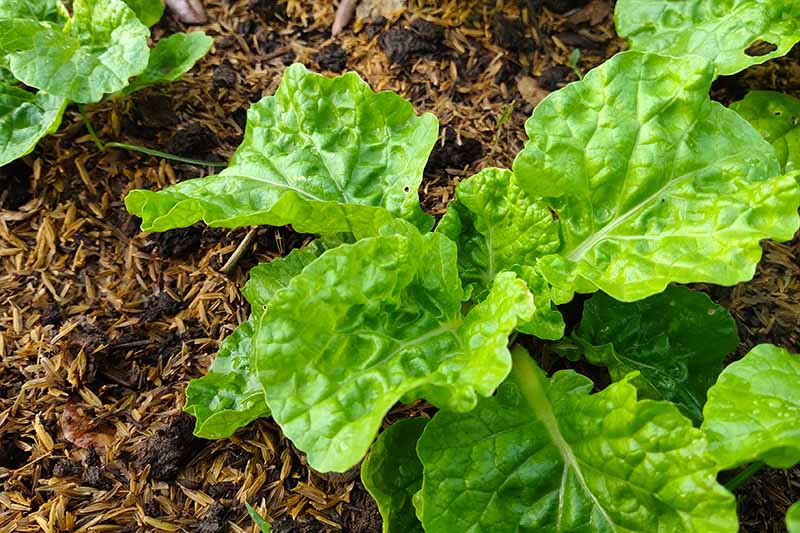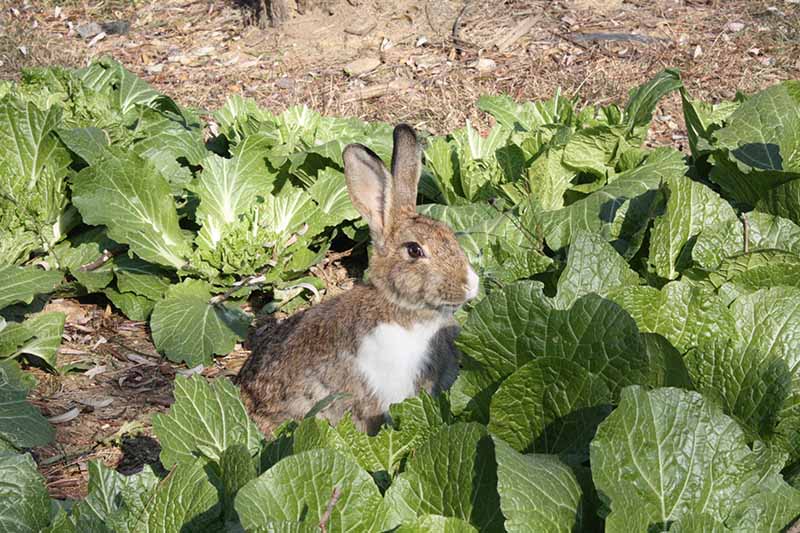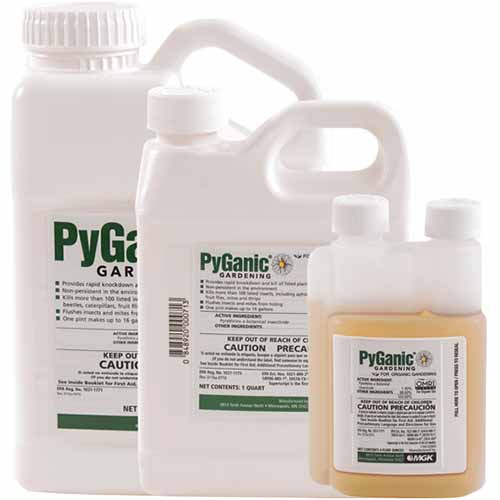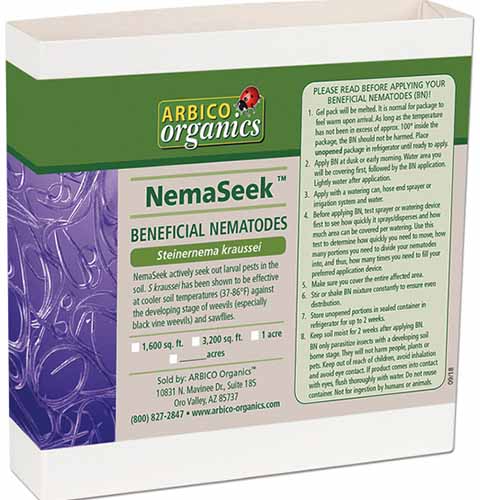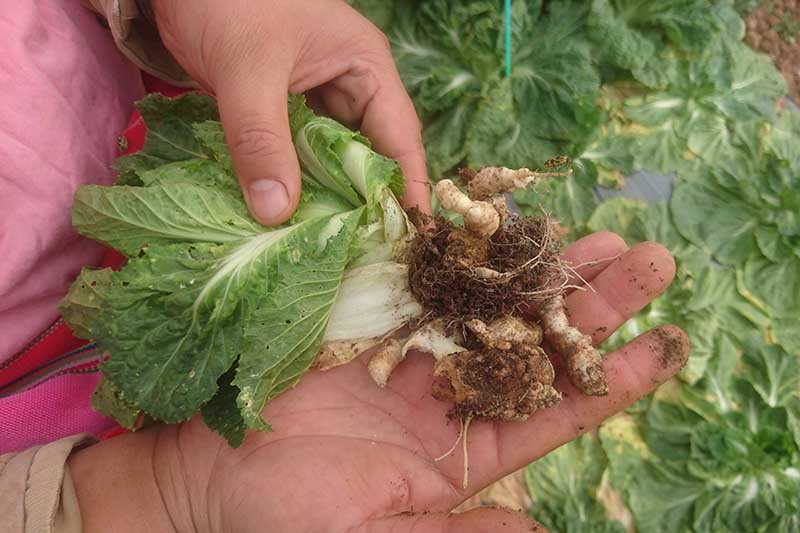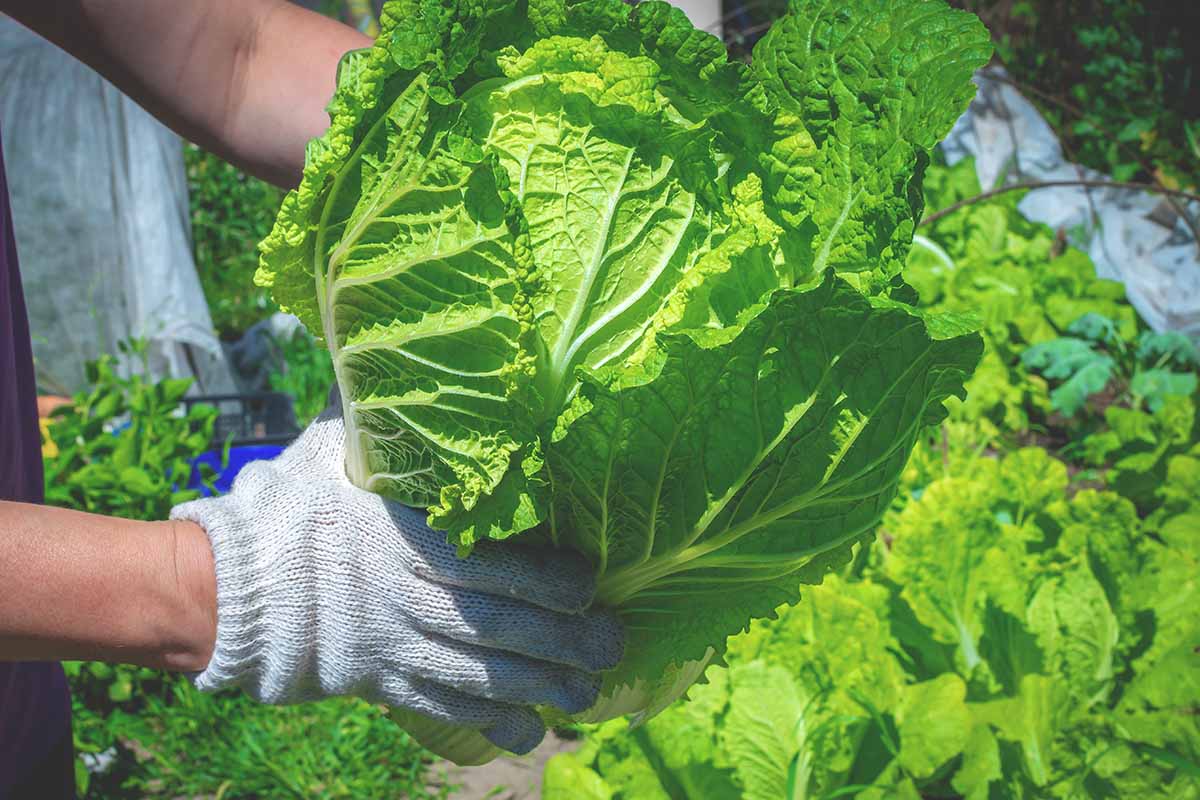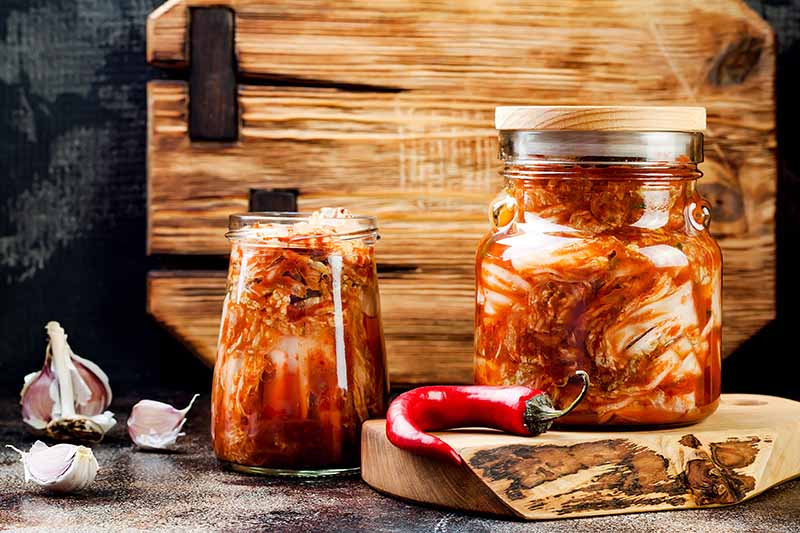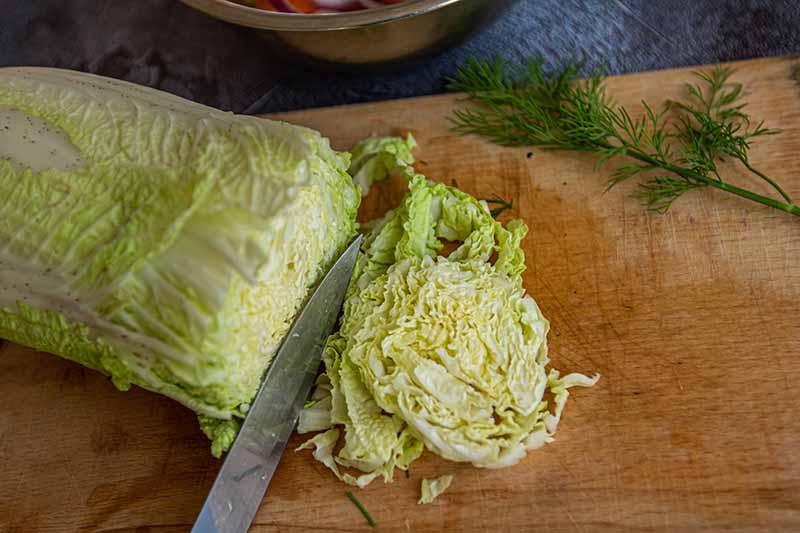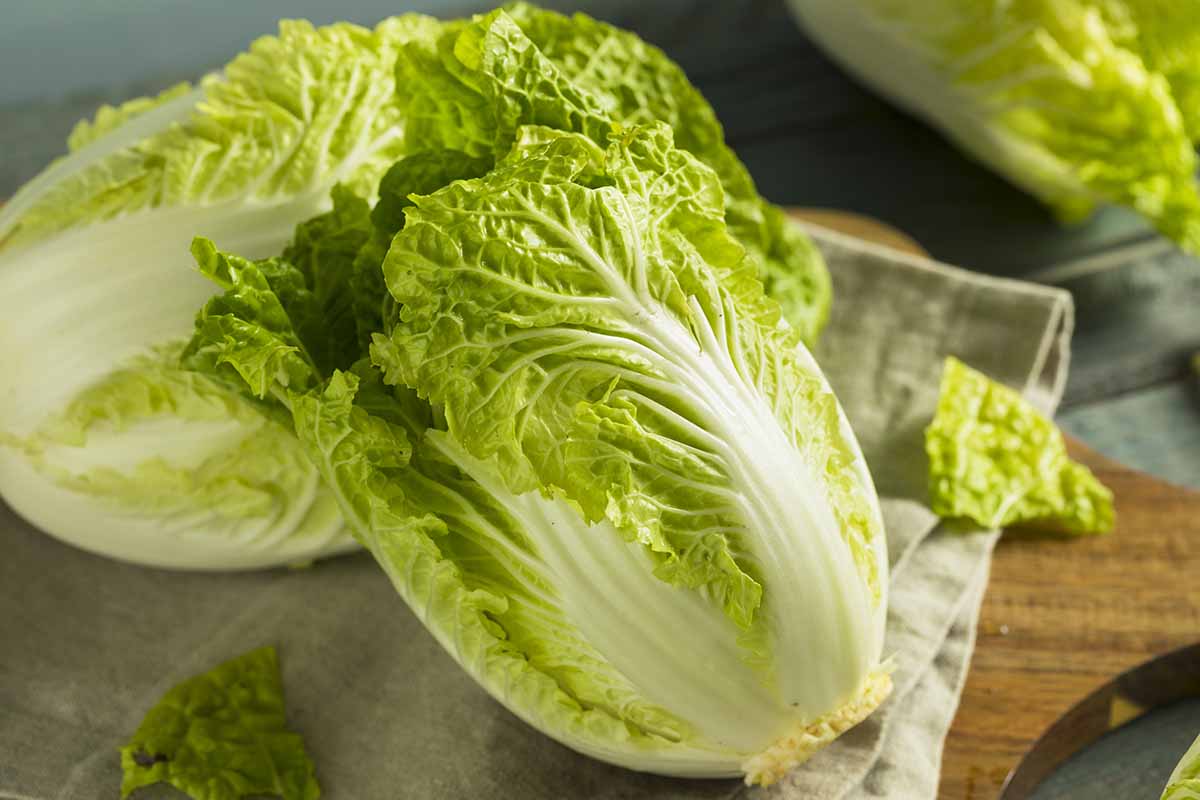Also known as Chinese cabbage, this plant is perfect for growing when many other leafy veggies have already given up the ghost. I’ve harvested it in January, May, and October, which means you can grow it during pretty much any time of year besides the heat of summer. We link to vendors to help you find relevant products. If you buy from one of our links, we may earn a commission. In the kitchen, they’re incredibly versatile. They can be used in a variety of savory dishes from pickles to appetizers to soups and salads, and just about everything in between. Here’s what we’ll go over up ahead: Napa cabbage is extremely tender compared to the traditional green variety, with a milder flavor. You might find that you can use it in places where green cabbage doesn’t work. Excited to put your plants in the ground? Then here we go.
What Is Napa Cabbage?
People in the US mostly call this vegetable napa cabbage, while those in most other English-speaking areas call it Chinese cabbage. It’s also known as celery or winter cabbage, or pe-tsai. The name napa has nothing to do with the famous farming valley in California. It’s derived from the Japanese word “nappa,” which may refer to any leafy green vegetable. That’s not what they call it in Japan, though. In Japan, the plant is called hakusai, which translates to “white vegetable.” In Korea, it’s called baechu and is used to create kimchi. In Mandarin Chinese, the veggie is referred to as dàbáicài. Technically, this plant is a biennial, but we grow it as an annual because the plant turns tough and goes to seed in its second season. Each plant grows up to about two feet tall and 18 inches wide at maturity, though this can vary depending on the cultivar. There are two types of Chinese cabbage: loose leaf, such as ‘Chirimen Hakusai,’ and heading types like ‘Green Rocket.’ These are often called Michihili types.
Cultivation and History
Napa cabbage originated in eastern Asia. It has been an important vegetable in Asia for centuries and we have records of it being cultivated in areas outside of its natural habitat as early as the 15th century. It reached Europe in the 1700s but didn’t really become a mainstay in grocery stores there and in the US until recently. Thank goodness it has!
Propagation
Chinese cabbage grows extremely well from seed, but if you want to shorten the growing season, purchasing transplants is also a reliable way of propagating these plants.
From Seed
Sow seeds in the garden after the last projected frost date in the spring or 90 days before the first projected frost date in the fall. If you don’t have 90 consecutive days between 50 and 80°F in your region, you can start your seeds indoors up to six weeks before you intend to plant them outside, as described below. The location should receive at least six hours of sunlight per day. Plants can tolerate a brief frost, but an extended frost causes bolting. Spring crops are particularly susceptible to bolting. In Zones 8 and 9, you can start seeds in November in a greenhouse, hoop garden, or cold frame for a winter harvest. Plant your seeds about a quarter-inch deep in soil that has plenty of compost worked in. Compost improves drainage and water retention, so it’s useful whether you have soil that contains a bit too much clay or an overabundance of sand. The pH should be between 6.0 and 7.5. Water well and keep the soil moist until the seeds germinate. You can expect seeds to germinate in just four days, though it might take up to seven days. Gardening isn’t an exact science and variable factors like temperature can impact how long it takes for the seeds to wake up. Seeds should be planted six to eight inches apart and thinned to 12 to 18 inches apart after they sprout. Why such a broad range? If you grow your plants closer together, they’ll have smaller, more flavorful heads. But heads planted close together tend to experience more diseases, so it’s a balance that you’ll need to try to find. Careful watering, pruning, and hygiene can help reduce the incidence of disease if you want to aim for smaller heads.
From Seedlings/Transplanting
Those with short growing seasons might be better off purchasing transplants. They’re readily available and this option reduces the outdoor growing time by a month or more. Plus, Chinese cabbage transplants well. I love CowPots because they’re made of cow poop, which is an extremely renewable resource, not to mention nutritious for your cabbages. CowPots Biodegradable Pots Nab a pack of 12, 180, or 450 at Arbico Organics. Plant one seed per pot a quarter of an inch deep and water well. Place in a spot where the emerging seedlings will receive about six hours of direct sunlight a day, or provide supplemental lighting. Keep the soil moist so that it feels like a well-wrung-out sponge. Once the seedlings are about three inches tall and have several true leaves, you can transplant them, so long as the weather is cooperating as well. To transplant, remove the seedlings from the container (unless you used or purchased yours in compostable pots) and place them 12 to 18 inches apart in soil that has been amended with well-rotted compost. Put your transplants closer together for small, more flavorful heads and further apart for larger heads. Water the soil well after planting.
How to Grow
Napa cabbage has a narrow temperature range in which it can grow. Temperatures below 50°F or above 80°F will cause the plant to bolt. That usually means spring and fall are your best windows for growing. Direct seeding in the fall is the most reliable method for a healthy harvest. If you live in an area that doesn’t have a long growing season with temperatures in this range, start your plants indoors and then move them outdoors to grow in a spot with afternoon shade. You should also be prepared to run outside with an armful of cloth or paper bags to cover your plants if a freeze is in the forecast. Essentially, you’re trying to mitigate any extremes in temperature. Since most of us don’t live somewhere with idyllic weather for the majority of the year, we have to make do. Remember, extreme temperatures cause bolting, and bolting means you don’t get to chow down on your harvest. There are also a few cultivars that are resistant to bolting that you might like to choose. These include ‘Emiko,’ ‘Fun Jen,’ ‘Hon Tsai Tai,’ ‘Jade Pagoda,’ ‘Maruba Santoh,’ and ‘Shuko.’ ‘Fun Jen,’ ‘Green Rocket,’ ‘Green Lance,’ ‘Hon Tsai Tai,’ ‘Pak Choi White Stem,’ and ‘Shuko’ can handle colder temps than other cultivars. The soil must be well-draining with a pH between 6.0 and 7.5. You can’t allow the soil to dry out, but you don’t want it to become waterlogged, either. You need to strike a good balance. Regardless of whether you have overly sandy or overly clay soil, the best way to enrich it and improve soil retention and drainage is to work in lots of well-rotted compost before planting. Keep the soil watered well so that it feels like a well wrung-out sponge and keep it about that moist as the plant grows. No more than the top half-inch should dry out. Chinese cabbage isn’t terribly hungry. A side dressing of compost provided about halfway through the growing season should be plenty to meet its nutritional needs. You can also grow napa cabbage in containers. Choose a container at least nine inches across and equally as deep filled with potting soil.
Growing Tips
Plant in full sun or partial shade in warm regions.Choose bolt-resistant varieties in cold or warm regions.Plants do best in 50 to 80°F temperatures.Keep soil moist but not wet.
Maintenance
You don’t need to do much as your cabbages are growing except to keep an eye on them. Look for signs of pests or diseases (as we’ll discuss in just a bit) and trim away any leaves that turn yellow or brown. You can also prune away any leaves that are touching neighboring plants – eat these instead of tossing them! Loose-leaf types in particular will need some leaf trimming. They tend to have more yellowing on the outer leaves and they spread out, which means they can encroach on other plants.
Herbivores
Cabbages of all kinds seem to be a favorite of rabbits and deer. If you have either animal in your area, assume that they’ll be coming for your crops.
Barrel Head
This hybrid cultivar is massive. It’s a heading type with heads that can weigh up to five pounds each and reach 14 inches tall. The outer leaves are medium green while the inner leaves are paler with white ribs. Not only does it resist bolting, ‘Barrel Head’ resists diseases like downy mildew and clubroot as well. ‘Barrel Head’ Plant these a bit further apart than your typical cabbage so they can stretch and grow to full size. They mature in about 75 days. Snag packs of 200 seeds at Burpee.
Emiko
Another hybrid heading type, the outer leaves are pale green and the inner leaves are cream, both with white ribs. The heads grow to about 10 inches tall. ‘Emiko’ ‘Emiko’ is bolt resistant and resists clubroot, black leaf spot, and Fusarium yellows. Plants mature in 65 days.
Fun Jen
Can’t wait to dive into your crop? ‘Fun Jen’ is an heirloom, loose-leaf type that is ready in just 45 days. Not only that, but you can cut a leaf here and there and new ones will replace them. The leaves are medium green with thick, white ribs. This plant grows to about 10 inches tall and is resistant to bolting.
Green Rocket
‘Green Rocket’ is another massive variety. The heads are thinner than ‘Barrel Head’ but they’re taller and weigh up to four and a half pounds when mature. The leaves are particularly sweet and the plant matures in about 70 days. This heading hybrid does well in warmer and colder temperatures than many other cultivars.
Jade Pagoda
Surprise! ‘Jade Pagoda’ has jade green outer leaves. Once you peel the heading type hybrid open, you’ll see sunny yellow leaves. The plant has large, crisp, white ribs and is resistant to bolting. Each head grows to about 10 inches tall in about 65 days. ‘Jade Pagoda’
Kyoto No. 3
This heirloom matures in 80 days, so make sure to plan ahead. It’s worth the wait, though. The heads are a massive seven pounds when mature and about 24 inches tall. The leaves are light green on the outside and yellow on the interior, with bright white ribs. This is a heading type that you can pluck earlier if you want, or let it grow to its full size. ‘Kyoto No. 3’ Just don’t let this one dry out. The heads will crack and split.
Maruba Santoh
This loose-leaf type is an heirloom cultivar that is ready in just 30 days. As with other loose-leaf types, you can harvest the leaves as needed or wait for the entire 10-inch plant to mature and harvest all at once. ‘Maruba Santoh’ has a mild flavor and tender green leaves with crispy white ribs.
Michihili
‘Michihili’ (the cultivar, not the broad term for heading types) is a particularly pretty variety with heavily wrinkled green leaves and bright white ribs. The interior leaves are extremely tender and pale yellow. The heads are about 10 inches tall and grow more compactly in cooler weather, maturing in about 75 days. In warm weather, the plants tend to mature more quickly and the heads are looser. ‘Michihili’ If you plan to make kimchi, this is the one to pick. It lends itself perfectly to this use. Snag yourself a small packet or a one-ounce, quarter-pound, pound, or five-pound package of seeds at Eden Brothers and be sure to send me some of that tasty kimchi once it’s ready!
Monument
If you live in an area that tends to surprise you with cooler or warmer temps than napa cabbage prefers, this hybrid is a monument to reliability. The heads are huge, up to four pounds each, and they stretch up to 12 inches tall. This heading type grows extremely upright and compact, like large, green monuments in the garden. Inside, the leaves are pale yellow and tender, and it’s ready in 70 days.
Pacifiko
With pale green, crisp leaves, ‘Pacifiko’ is lovely if you want a veggie to pickle or steam. The hearts are tender and pale yellow. The heads are about 13 inches tall and ready in 75 days. That’s enough to recommend it, but this hybrid is also resistant to leaf spot, clubroot, Fusarium yellows, and tip burn, and is slow to bolt.
Red Dragon
Napa cabbage is lovely, but ‘Red Dragon’ is in a class all its own. The bright violet heads and pure white ribs are as pretty as a picture. Inside, the leaves are mottled violet and green. ‘Red Dragon’ The heads are large, too. They grow up to 14 inches tall in 70 days. There’s some bad news, though. This hybrid is prone to tip burn. To tame this dragon, buy a pack of 200 seeds at Burpee.
Managing Pests and Disease
Napa cabbages are delicious, right? Know who else thinks so? Pests, fungi, and herbivores. You can hardly blame them, but if you want to enjoy those luscious heads before they can, you’ll need to keep invaders out of your garden.
Deer
If you live somewhere where deer are frequent visitors, you’ll need to prepare yourself. Deer love cabbages. It’s like they have some sort of cabbage radar and they can sense when a seedling pops out of the ground. They’ll use that radar to home in on the heads and devour them. You’re definitely going to want to read our guide to learn how to stop them in their tracks.
Rabbits
You know the story of Peter Rabbit, the bunny who risks life and limb to invade Farmer McGregor’s cabbage patch? Yeah, I’m convinced that’s based on a true story, and while I rooted for Peter when I was a kid, I definitely relate more to poor Farmer McGregor these days. Rabbits will do whatever it takes to get to your cabbages. Whether you wage a counterattack with traps, scarecrows, or fences, they’ll try to find a way around all of them to devour your crop. Hop over to our guide to learn how to protect your precious heads.
Insects
There are a handful of insects just waiting to feed on your cabbage plants, which is a problem not just because they can kill young seedlings or damage the leaves, but because they may spread diseases as well. Here are the most common invertebrates that may plague your crop:
Cabbage Aphids
Cabbage aphids (Brevicoryne brassicae) feed on plants in the Brassicaeae family. They’re tiny, grayish-green insects that are often covered in what appears to be a white dust, which is actually a waxy protective coating. They prefer to eat the young leaves and stems of plants, but they’ll feed on any part. Look for yellow stippling, yellow leaves, or stunted growth in addition to the insects themselves. If you notice these pests, deal with them as you would any other aphid species. Our guide has more detailed information.
Cabbage Loopers
Noticing ragged holes in the leaves of your cabbage? It’s very possible that you’ve been visited by cabbage loopers (Trichoplusia ni). The larval stage of certain night-flying moths, these little green caterpillars can eat a tremendous amount of your crop. Head on over to our guide to managing these pests to learn more.
Cabbage Root Maggots
Cabbage root flies (Delia radicum) lay eggs in the soil around cabbage plants. The maggots that emerge from these eggs burrow down into the roots of the plant and start eating. Infested plants will wilt during the day and the margins of the leaves may turn purple. As the infestation worsens, the plants collapse and die.
Cabbage Worms
I have a love/hate relationship with cabbage worms. The adult butterflies are beautiful, with their white wings that sport a small, dusty gray spot. If it’s too late and you already have an infestation, you need to act quickly. A combination of beneficial nematodes and a product containing pyrethrum works wonders. PyGanic Gardening organic insecticide contains pyrethrum, which is made out of chrysanthemum flowers. You combine it with water and soak the soil with it to kill off all kinds of maggots. PyGanic Gardening Arbico Organics carries this product in eight-ounce, 32-ounce, and gallon-size containers. At the same time, mix beneficial nematodes with water and soak them into the soil. Steinernema kraussei nematodes work particularly well because they’re effective in cooler weather when your cabbage is growing. NemaSeek Beneficial Nematodes Arbico Organics has NemaSeek nematodes available in five, 10, 50, 250, and 500 million count containers. These pests don’t attack spring crops because they mature during the summer, which means you might be better off planting in the spring if you’ve struggled with these pests in the past. To me, they are one of the ultimate symbols of summer as they flit around the garden. But as they flit around the garden, in the back of my mind I’m thinking about how all of my brassicas are now at risk. Because those lovely butterflies lay eggs that hatch into cabbage worms, and cabbage worms suck. They are voracious and they’ll devour the leaves of your cabbages. I struggle with them every year and I find that using floating row covers and handpicking the worms are the best ways to handle them. For all the information you’ll need on identifying and dealing with these pests, check out our guide.
Cutworms
I don’t have conflicted feelings about cutworms as I do with cabbage worms (though the birds in my garden might disagree). They’re just wriggly little jerks. The larvae of moths in the family Noctuidae, they are hairless grub-like critters that chew through plants at the base, killing them. Read our guide for more information on how to identify and deal with them.
Flea Beetles
Noticing tons of tiny holes in the leaves of your cabbage? You probably have flea beetles. These little beetles received their name because they hop around much like the pests that like to bother your pooch. To figure out how to identify them and stop them from making a meal out of your crops, you might be interested in reading our guide to flea beetles.
Slugs and Snails
Recently, my neighbor came out to ask me if everything was alright. I was wandering around my garden with a flashlight and a jar in my hand. I had to explain that I was on a slug hunting expedition. No doubt if you’ve been gardening long enough, you’ve found yourself armed and hunting for those slimy little garden wreckers too (though maybe you weren’t in your pajamas?) Anyway, slugs or snails and cabbages go together like, er, well… Peter Rabbit and cabbages. Of all the pests on this list, you can bet you’ll come across these gastropods. Luckily, we have a comprehensive guide to help you eradicate – or at least control – the slugs and snails in your garden.
Disease
Brassicas are subject to many diseases, but napa cabbages are a bit more resistant than many of their cousins.
Black Leaf Spot
Black leaf spot, aka Alternaria leaf spot (Alternaria brassicicola) is extremely common on cabbage, which is why purchasing a resistant cultivar is a smart idea. At first, you’ll see little black speckles on the leaves. These start to grow larger with a yellow halo surrounding the black center, which can develop a fuzzy black coating of spores. Next, the entire leaf starts to turn yellow and may eventually die. The fungus usually attacks the outer leaves first before moving into the interior. It thrives in cool, humid conditions and can cause stunted growth or plant death in seedlings. Beyond buying resistant cultivars, always buy certified disease-free seed, because that’s the most common way this disease spreads. It also travels on flea beetles, aphids, wind, and in water. It can live on plant debris and in the soil too. That means you should rotate your crops so that nothing in the Brassicaeae family is grown in the same place more than once every three years. Be sure to control weeds and remove plant debris at the end of the season as well. It’s fairly easy to avoid clubroot. Just don’t plant your cabbage in the same spot where anything in the Brassicaceae family has been planted in the past five years. Clean your tools between use. Pick up a 32-ounce ready to use bottle or 16-ounce concentrate and mix it with water following the manufacturer’s directions. Bonide Revitalize Biofungicide Then, drench the plant in the spray once a week until the symptoms have resolved for at least a week. This product is available from Arbico Organics.
Clubroot
Plants will be stunted and will wilt even if the ground isn’t dry if they have clubroot. The leaves may or may not turn yellow. And if you were to dig up the plants, you’d see that the roots have bulbous, club-like growths. As the disease progresses, the roots will turn black and mushy. You should also amend your soil with lime to raise the pH to about 7.2. This won’t harm your cabbage plants, but it will destroy the pathogen (Plasmodiophora brassicae) that causes this disease. Unfortunately, if clubfoot strikes, there’s nothing you can do to save the plant. Just harvest the leaves at whatever stage they’re at and enjoy them young, so long as they’re not yellowed or wilted. Then, don’t plant anything in the cabbage group there for at least five years. ‘Emiko,’ ‘Pacifico,’ and ‘Shuko’ are all resistant to clubroot.
Fusarium Yellows
Fusarium wilt, cabbage yellows, Fusarium yellows… whatever you call it, this fungal disease is bad news. Caused by the fungi Fusarium oxysporum f. sp. conglutinans, it results in yellow leaves on one half of the plant and wilting during the day, even when the plant has plenty of water. In as little as two weeks, the leaves turn brown and the entire plant can die. The fungi thrives in warm temperatures between 75 and 85°F, and once you have it in the soil, it’s likely there for life. You can’t stop it once it takes hold. All you can do is not plant cabbage in that area ever again, or choose resistant cultivars and hope for the best.
Tip Burn
This isn’t a disease so much as a physiological disorder. If you’ve ever dealt with blossom end rot on tomatoes or peppers, it’s the same concept. Tip burn (which can happen on internal or external leaves) is caused by a lack of calcium in the plant tissue. It starts with dry, browning tips on the leaves, and eventually, the entire leaf can die off. However, that doesn’t mean you can go toss some antacid tabs or eggshells into the garden to add calcium to the soil once your plants are growing to reverse this problem, despite gardening myths that suggest this is the best solution to calcium issues. Rapid growth and irregular watering lead to tip burn, so it should come as no surprise that offering regular water (but not too much) and not over-fertilizing (especially with nitrogen) are good ways to avoid it. Don’t leave the heads in the soil for too long, as this contributes to the problem as well. Pick up resistant cultivars as an extra layer of protection.
Harvesting
You can’t judge a napa cabbage by its size. The best way to tell if a head is ready to harvest is by the feel of it. The head should feel solid and dense, and there should be little give. Make sure to note when your particular cultivar is set to mature in your gardening journal and start squeezing frequently right around that time. Loose-leaf types are ready to harvest whenever they’ve reached your preferred size. To harvest heading types, use a knife to slice the plant off at the base. Remove the outer leaves before storing or using. For loose-leaf types, use scissors to cut the leaves as desired, or cut the entire plant off at the base with a knife.
Preserving
There are lots of ways to preserve cabbage, including pickling, fermenting, dehydrating, freezing, refrigerating, or placing them in a root cellar. If you ask me, the best way of all is making kimchi. Kimchi is a fermented cabbage product, much like sauerkraut, typically made with lots of salt as well as ginger, garlic, fish paste, red pepper flakes, radishes, and scallions. To dry cabbage, you can arrange the leaves in single layers on trays and place them in your food dehydrator for about 12 hours at 140°F. Turn the leaves every few hours. To freeze, blanch the leaves in boiling water for two minutes and then place them in a bowl filled with ice water to stop the cooking process. Drain, dry, and place the leaves in resealable bags. Press all the air out, seal, and place the bags in the freezer. Leaves can last up to a year when processed this way. To keep in the fridge, wrap an uncut, unwashed head in paper towels or a thin cotton towel and insert this into a resealable plastic bag. Place it in the crisper drawer. A head can last about two months in the fridge. In a root cellar, place them individually a few inches apart on shelves.
Recipes and Cooking Ideas
Every time I think I’ve figured out all the ways to use napa cabbage, I find a new one. It’s a surprisingly versatile veggie. The steamed leaves are perfect for making little packets filled with cooked mushrooms, meat, cheese, or rice. You can also use the fresh leaves as little trays to hold the same types of ingredients. One of my personal favorites is to grill wedges of cabbage. This sounded a little odd to me at first, but once I tasted it, I was not only a convert but its biggest champion. Drizzle olive oil on wedges of cabbage and grill until they reach the texture you desire. A little char on the outside only adds to the flavor. You can use cooked cabbage in stews and soups, or to stuff wontons, pastries, or pasta as well. Of course, cabbage is essential for slaw. Try a homemade cabbage and shaved asparagus slaw with cumin-sesame dressing with this recipe from our sister site, Foodal. Just substitute napa cabbage for the purple stuff. The raw leaves are delicious in tacos, as a garnish over noodles or rice, in salads, or even on sandwiches. Foodal’s recipe for autumn napa cabbage salad is a fantastic place to start. If green cabbage is too tough, try pulling out the Chinese cabbage instead. How do you use up your tasty heads? Let us know in the comments below! And if you want to increase your cabbage knowledge even more, read some of our other guides next:
How to Plant and Grow Cabbage: A Fall and Spring Staple CropHow to Grow Winter Cabbage for a Late-Season Harvest9 of the Best Cabbage Varieties to Grow at HomeHow to Grow Savoy Cabbage
